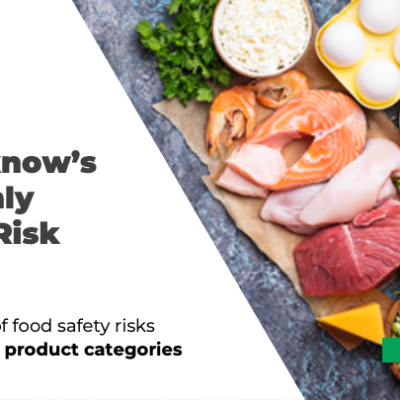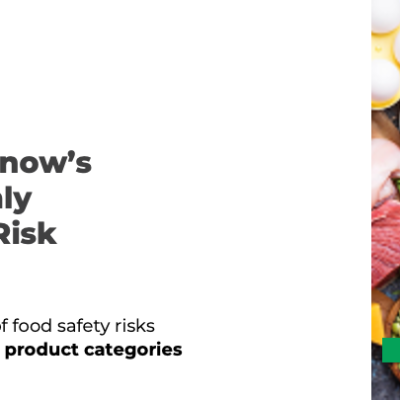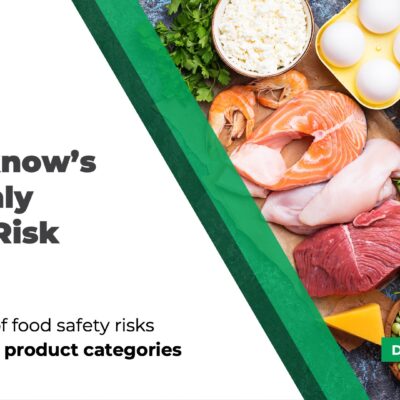
Worldwide trends: Prospects and challenges for the food quality and safety management
We are faced with a variety of vast changes and rapid innovation trends in the food sector. In a world that is transforming rapidly and often in unpredictable ways, the food industry has to keep up with all these changes, in order to comply with safety and security standards, while at the same time meeting the constantly changing needs of the consumers. New challenges are right around the corner.
When analyzing the global drivers and market trends and their consequent food safety and quality impact, there’s a lot to be covered. According to the FOODAKAI database, the top risk trends forecasted for this year are shown in the following board.
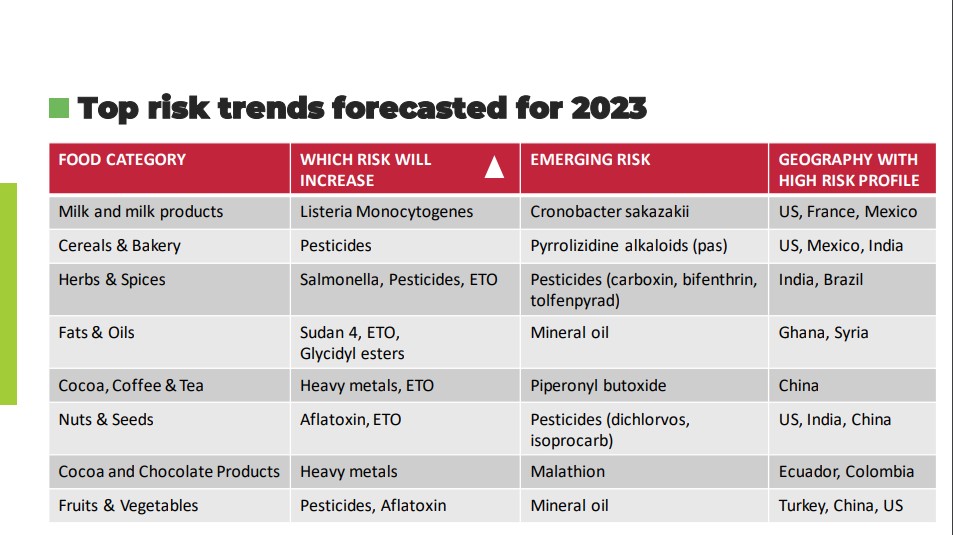
Predicted risk trends are the somehow expected result from the combination of various factors and global events that have happened in the last few years. This combination now has its fingerprint along the whole food chain. Main food categories, such as fats and oils, cereals and bakery products, and fruits and vegetables originating mostly from China and the US or from developing countries, such as India, are facing the risk of being contaminated with emerging chemical compounds or pathogens. The possible presence of specific pesticide residues, such as ethylene oxide (ETO) and piperonyl butoxide or the contamination with pathogens such as Listeria monocytogenes shouldn't have caught us by surprise.
As far as geopolitical tensions are concerned, the Russian invasion of Ukraine has disrupted many aspects of the agri-food supply chain. From the production process, the storage system, and the transportation of the products, the Russian- Ukraine War has its impact on the food shortage and management system. The blockage of product exporting, mostly cereals, and oils, has caused a significant price increase. Alternative export countries, outside the EU, had to be found as a not-so-permanent solution. Mexico, India, and African countries entered the game. Of course, the unspecified or even sometimes non-existent legislative framework in these countries, regarding the use of pesticides, will have unfortunate expected results.
Let’s take ETO as an example. ETO is a gas used as a fungicide, bactericide, and insecticide in foods. Even though in the EU it has been banned since 1991, in some countries, such as Canada, India, or even the US its use is still not forbidden. The lack of uniformity in worldwide regulations as to ETO and the new forced input resources from India, Ghana, Syria, and the US (see FOODAKAI Top Risk Trends forecasted for 2023) has already led to multiple notifications about foods contaminated with this pesticide, especially about foods entering the EU.
Speaking of the lack of uniformity in regulations, we couldn’t help but wonder; how will the long-desired sustainability agenda in the food sector become a reality considering this lack and the two-tier global food system. The bar for a food system fit for the future is set really high, but not all countries and their systems are ready for it. How can Brazil, Colombia, and Ecuador, the main export countries of cocoa and coffee, keep up with European standards, when their socio-economic systems and existing food legislation aren’t convenient for sustainable approaches?
On top of that, the increased demand for food, due to overpopulation growth and the already weakened food system, due to the COVID-19 pandemic, put a lot of pressure on the production countries and companies, who must supply food products to the markets continuously. The use of practices against the sustainability vision (eg. the use of mineral oils as additives in animal feeds) seems inevitable when covering the growing need for more food production. The presence of forbidden pesticide residues or heavy metals in food categories such as cocoa, herbs, and spices from Latin American countries, or fruits and vegetables from Turkey is unsurprising, when all these factors act synergistically. Scientific experts of authorities such as the Food Agriculture Organization of the United Nations (FAO), The United States Food and Drug Administration (FDA), and the European Food Safety Authority (EFSA), assess the importance of all global developments but consider that the real game changer in the food business is climate change. The majority of studies regarding climate change and food risks are related to the security of food provision and market speculation. The global temperature rises and the increased greenhouse gas emissions, along with the intentional and reckless use of water resources, cause changes and issues directly related to the agri-food and marine food sector, such as soil degradation, loss of terrestrial and inland water ecosystems, shrinking of natural resources, decrease of yields, and proliferation of microorganisms, such as Salmonella, that produce food-borne illnesses, especially on the most vulnerable developing countries.
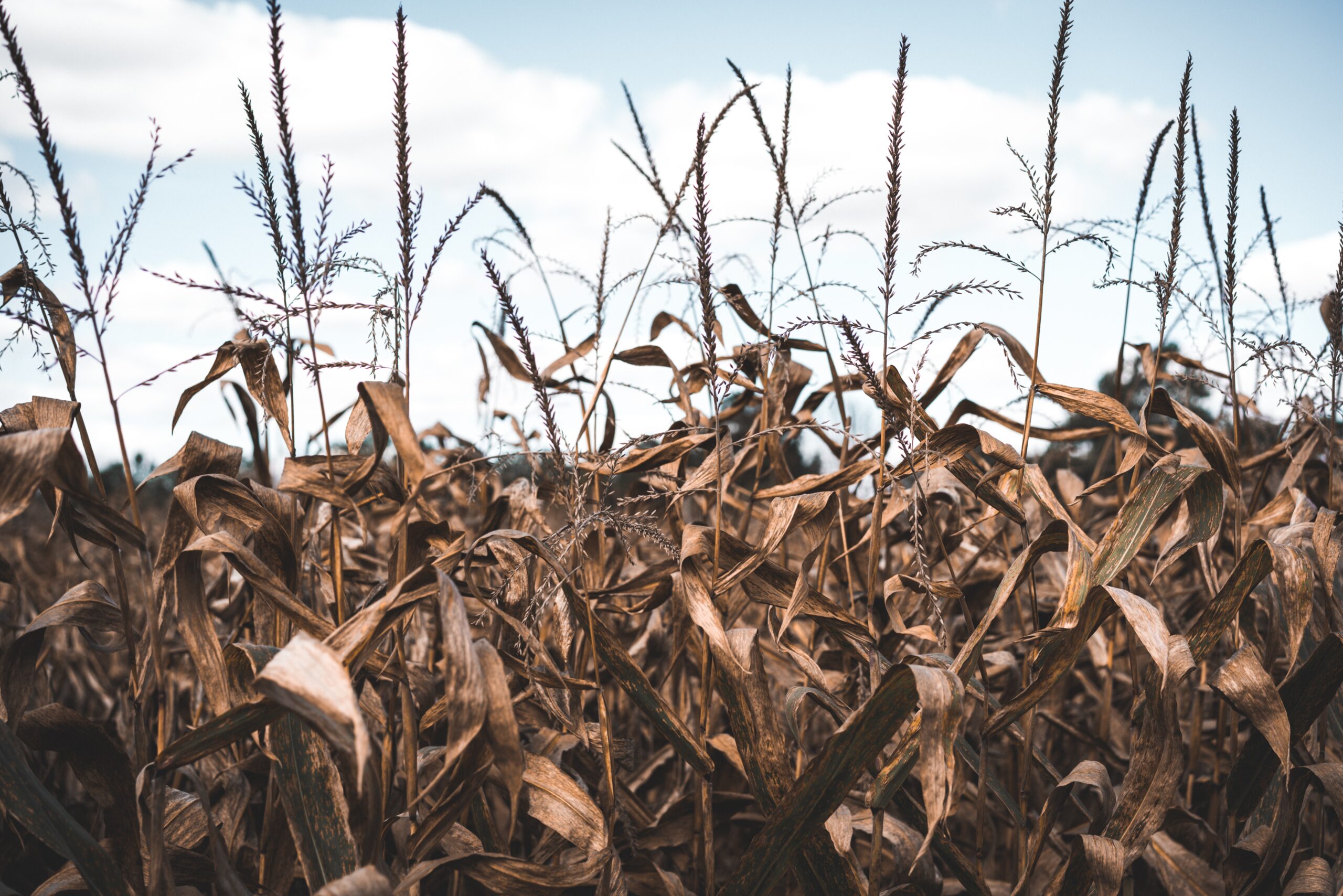
For example, one of the major problems with the rise of temperature is the growing presence of aflatoxins (mostly B1, B2, G1 and M1) in foods originating from countries with hot and humid climates, like India, China and sub-Saharan countries. Aflatoxins can occur in foods such as groundnuts, tree nuts, dried foods, and spices, as a result of fungal contamination before and after harvest, causing severe health problems, when entering the human organism.
Another climate-changing issue is the uncontrollable use of antibiotics for protection against pathogens thrive, which is especially happening in the aforementioned climate conditions. This use activates the vicious cycle of antimicrobial resistance. Like the cases regarding the presence of Listeria monocytogenes in various milk and milk products. General lack of hygiene and clinical mastitis, due to antimicrobial resistance after reckless use of antibiotics on dairy farms are associated with a high risk of L. monocytogenes proliferation, as shown in the FOODAKAI risk prediction board.
At this point, it’s time to point out the importance of the advances that have been made in the development of physicochemical instrumental methods, especially in high-performance mass spectrometers, but also to the introduction of quantitative analyses of macromolecules by the use of new bioinformatic tools. The presence of all these contaminants in the various food categories it’s not actually something new. But the ability to detect them even in quantities like parts per trillion (ppt) and in a wide range of commodities is something that was achieved relatively recently. For example, the presence of the pathogen Cronobacter sakazakii in milk products and especially in infant formula is known since the ‘80s, but determining rapid and specialized assays are developed only in the last few years. That’s maybe a reason that this deadly bacteria is not yet included in the U.S. Centers for Disease Control and Prevention’s (CDC) list of pathogens reported. However, authorities and food companies now have the tools to precisely determine most of all the safety issues along the food chain and that’s the reason behind the reporting and disclosing of more irregularities and non-conformities.
In fact, food companies set new goals for a more prosperous food future with sustainable practices. Eco-friendly technologies that reduce the footprint of the production system, enhance the industry’s decarbonization and restoration of water supply, the development of recyclable, compostable, and sustainable food packaging materials and a variety of new products from bio-based ingredients to upcycled low-value foods into higher-value products, are some of the new trends inside the food industry. So, practices like the use of raw materials from dubious quality suppliers or toxic chemical detergents as cleaning agents (remember chlorate and perchlorate ions in baby food and infant formula, as a by-product of cleaning agent, was the recent issue in the dairy industry), belong to the past.
Food industries and management systems must make a difference to stand out in a continuously changing, competitive, integrated market. Increased focus on food safety urges quality control systems to move beyond the standards. Until now, proactive and reactive measures are based on specific requirements of various regulatory bodies in the food industry. Nevertheless, global developments bring new aspects of safety in large-scale industrial food production. Generation of new toxic agents, outbreaks of disease caused by foodborne pathogens, fatal poisonings, and recalls due to lack of microbiological safety or safety of genetically engineered food seek sophisticated predictive analysis.
State-of-the-art technologies, such as digital sensors, cloud computing, and Artificial Intelligence (AI), are the key to maintaining high food standards and safety management. From automation in product formulation, supply networks, manufacturing procedures, and in-process records to retail, new technologies seem to take the leap in chain integrity, link with consumers, tracking and tracing systems, and last but not least, transparency.
This transparency is nowadays a prerequisite for consumers, who seem to be more empowered, conscious, and willing to shift to a more sustainable food network. It’s not only the contemporary challenge of how to feed the ever-increasing urbanized population but also to satisfy an educated and demanding audience. In 2023, consumers seek for organic products, nutritious plant-based meat alternatives, new sources of proteins (sea plants, insects, fungal proteins), cultivated meat practices and better conditions for animals in the meat industry and slaughterhouses, verification on food authenticity, food packaging without using petroleum-based polymers or metals and last but not least, traceability and transparency in the food chain. As consumers play a notable role in the food supply chain, their preferences and behavior strongly affect the food system.
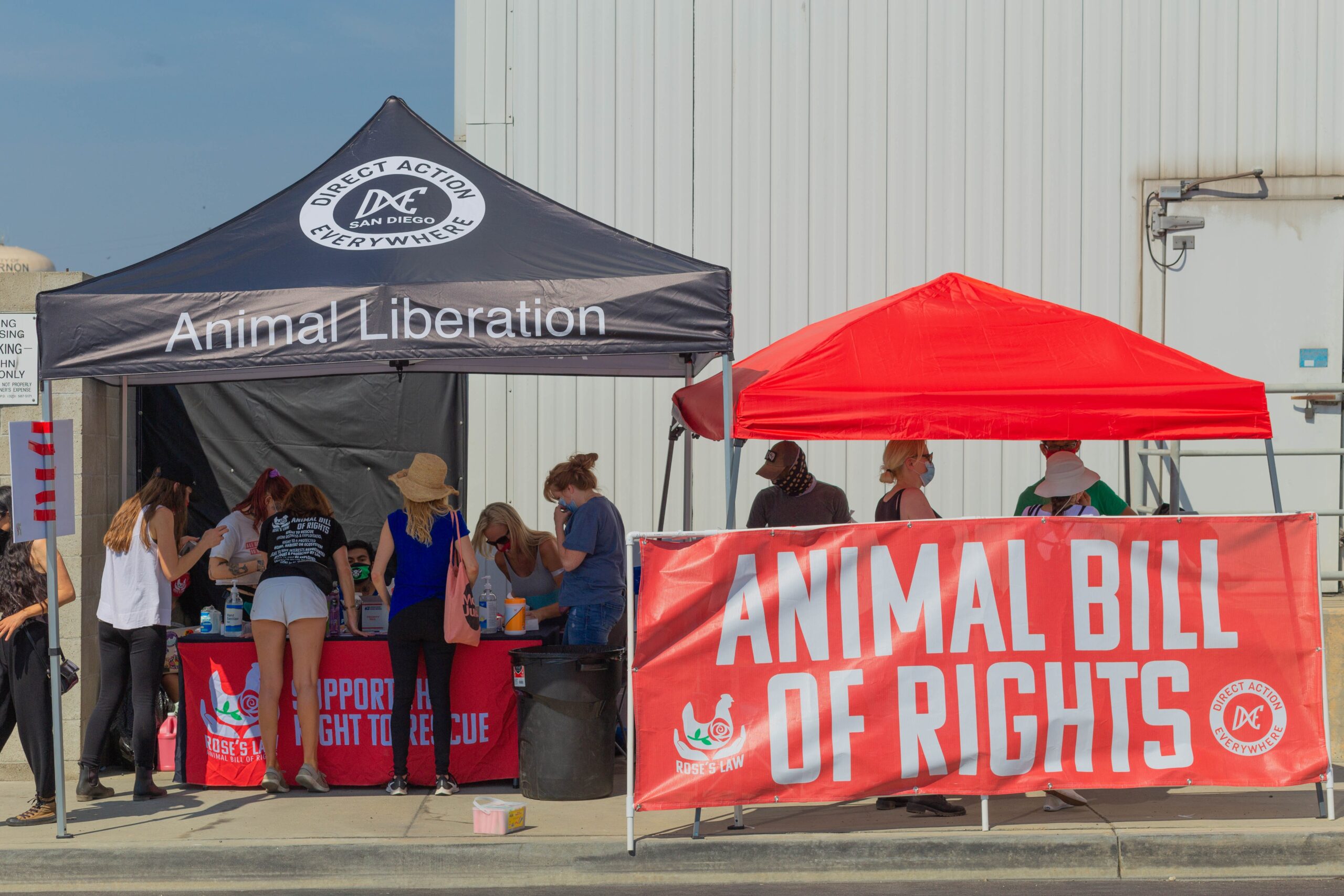
Necessity is the mother of invention. As we move towards an alternative food future, it is essential to assure that food is safe and nutritious for everyone. Worldwide evolutions and trends dictate holistic solutions for a sustainable and innovative food system that does not compromise public health and prosperity. Food safety should not be an afterthought, but a long-term priority, part of a transformed food system, whose purpose is to benefit all people, and protect the environment, the economy, and society.


